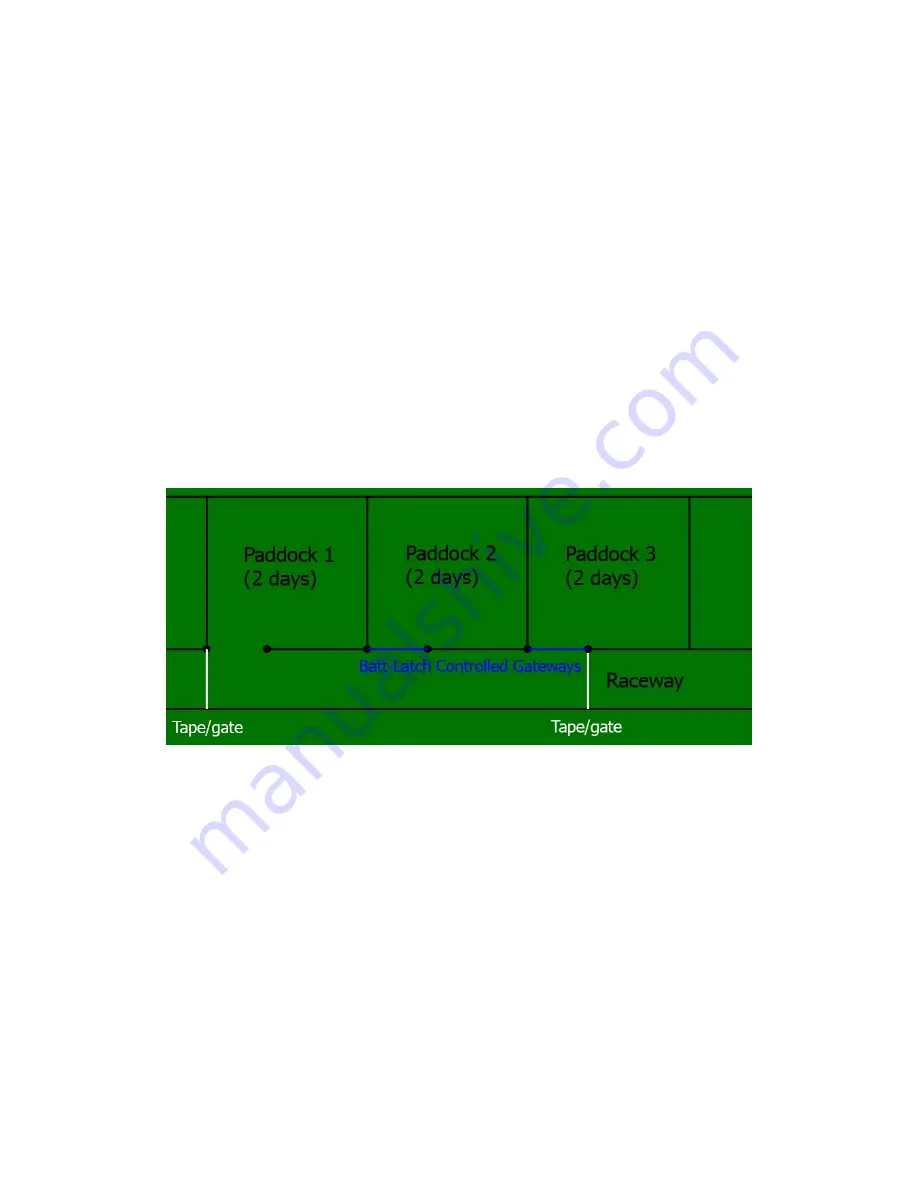
X
Preventing new pasture pugging:
Some dairy farmers save major
pugging damage to new and susceptible pasture by blocking the gateway
to that paddock with a Batt-Latch until all the herd has arrived from milking.
About 10 minutes later the gate is released and the herd enters quietly and
together with no human intrusion, reducing impact on the sward,
particularly in the gateway. Drystock farmers also confirm substantial
pugging reduction along fencelines and gateways due to Batt-Latch use.
X
Race layout:
With your herd making its own way along the race, it is
desirable that there be no sharp angles or visual obstructions in the race
where individual animals lose sight of the animal ahead, causing a
stoppage or bottleneck. Curved or angled corners work much better than
right angles.
X
Further uses:
One farmer uses a Batt-Latch attached to a bungy cord to
activate a switch on his water pump at the top of his farm, switching it off
and saving him a trip every evening. Another use has been to enclose hens
safely in their coops in the evening by releasing spring-loaded doors.
X
Runoffs/drystock
– The Batt-Latch has a huge potential in this area. It will
simply allow stock to move from one paddock or breakfeeding area to the
next. An example is detailed below:
The stock can be put into paddock # 1 for two days, which can be left open.
They will not be able to go into paddock # 2 or paddock # 3 since they are
closed off with a Batt-Latch and a spring/tape gate.
After 2 days (or any suitable time) the gate to paddock # 2 will be released by
a Batt-Latch and the stock will move into new grazing. Another two days later,
the gate to paddock # 3 would be released, and the stock would move into
that paddock, and so on.
In the unlikely event a release should fail, ensure the stock will be able to
enter the next released paddock, perhaps by having the first paddock in the
centre of the next two.
Batt-Latch
Instruction Manual
11
















